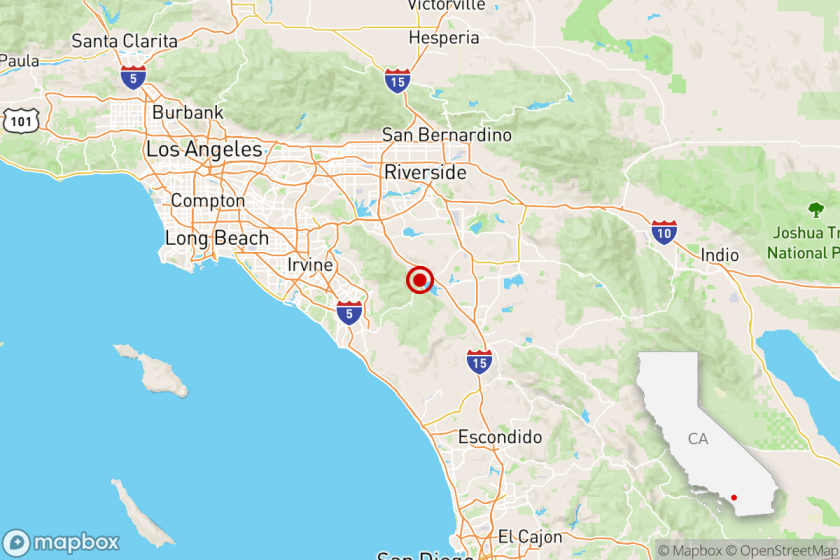7.5 Quake Kills 300 on Russia’s Sakhalin Island
At least 300 people were killed Sunday and hundreds more were feared buried under rubble after a powerful earthquake devastated a small town on Sakhalin Island in Russia’s Far East just north of Japan, news reports said.
The Itar-Tass news agency said 300 people were confirmed dead, and officials estimated that up to 2,500 people may have been killed or injured in the 7.5-magnitude quake off Russia’s east coast.
The temblor struck at 1:03 a.m. Sunday, flattening about 80% of the buildings in the oil-producing town of Neftegorsk, population about 3,200.
About 19 five-story concrete apartment buildings collapsed. Factories crumbled and several fires broke out, local officials said.
“I won’t speculate on how many dead or fatally injured people may still be lying under the rubble,” Lt. Col. Alexander Mikheyev said in a telephone interview from the Civil Defense headquarters in Yuzhno Sakhalinsk, the island’s capital. “The worst thing is that it happened in the dead of night when most people were at home in bed.”
The quake also fractured a 60-mile stretch of oil pipeline leading north from Neftegorsk to the city of Okha, 43 miles away, the head of the Sakhalin Marine Oil & Gas Co., Nikolai Borisenko, told Interfax news agency. Borisenko said oil could be seen leaking from several ruptures.
Casualty figures varied widely. By early today, 160 corpses had been found in the rubble, including those of 11 children, said the head of the Ministry of Emergency Situations, Sergei Shoigu. Earlier, ministry spokespersons had said 2,500 people were unaccounted for.
Phone and power lines were cut off. In Okha, the shock waves were strong enough to send balconies plunging off buildings, but there were no reported casualties. Officials said 279 injured residents from Neftegorsk, including 42 children, had been taken to outlying hospitals.
Local officials counting survivors reported that about 650 residents who lived in small brick homes in Neftegorsk emerged unscathed.
President Boris N. Yeltsin expressed his sorrow over the tragedy and ordered emergency aid sent to the stricken island. Japan, still recovering from the Kobe quake that killed more than 5,000 people in January, sent condolences and offered assistance. Japanese Prime Minister Tomiichi Murayama said he had ordered a “thorough assessment” of the damage.
*
Sakhalin, which lies just north of the Japanese island of Hokkaido, has 750,000 residents on an island about the size of West Virginia. It has been plagued by almost monthly earthquakes, but until now most have been relatively small.
As aftershocks of up to magnitude 3.0 jolted the island Sunday, rescue teams from all over eastern Russia rushed to Sakhalin. But heavy fog reportedly prevented some of the 18 airplanes and helicopters from landing.
Among their cargo are food and blankets; overnight temperatures on Sakhalin are hovering around freezing. First Deputy Prime Minister Oleg N. Soskovets, who flew to Sakhalin with other officials Sunday evening, said the cash-strapped central government has allocated 30 billion rubles ($5.9 million) for emergency relief.
“I think that this is the worst earthquake ever in Russia,” Soskovets said. “It is a calamity. Judging by the nature of the destruction and the potential number of victims, it looks like the most terrible.”
However lethal, the scale of Sunday’s damage pales in comparison with the 1988 quake that ravaged then-Soviet Armenia, killing more than 25,000 and leaving more than a million people homeless. That disaster was followed by seven years of economic convulsion and a war with neighboring Azerbaijan, and even today many of the victims of the quake are living with relatives or squatting in half-finished buildings.
Shoddy Soviet-era construction, made more dangerous by cost-saving measures such as adding extra sand to cement, was blamed for the extremely high death toll in Armenia. But Soviet central planning threw up nearly identical buildings everywhere across this vast nation--including on Sakhalin, eight time zones and more than 3,800 miles east of Moscow.
With the post-Soviet economy in collapse, nothing has been done to remedy known architectural defects, let alone improve seismic safety.
The quake in Sakhalin was not unexpected. In February, the ministry for emergencies released a report saying there was an 80% to 85% likelihood of a violent earthquake in the Russian Far East in the next three years. But the report said the quake was most likely to occur on the Kamchatka peninsula, across the Sea of Okhotsk from Sakhalin, or in the northern Kuril Islands.
More to Read
Sign up for Essential California
The most important California stories and recommendations in your inbox every morning.
You may occasionally receive promotional content from the Los Angeles Times.






